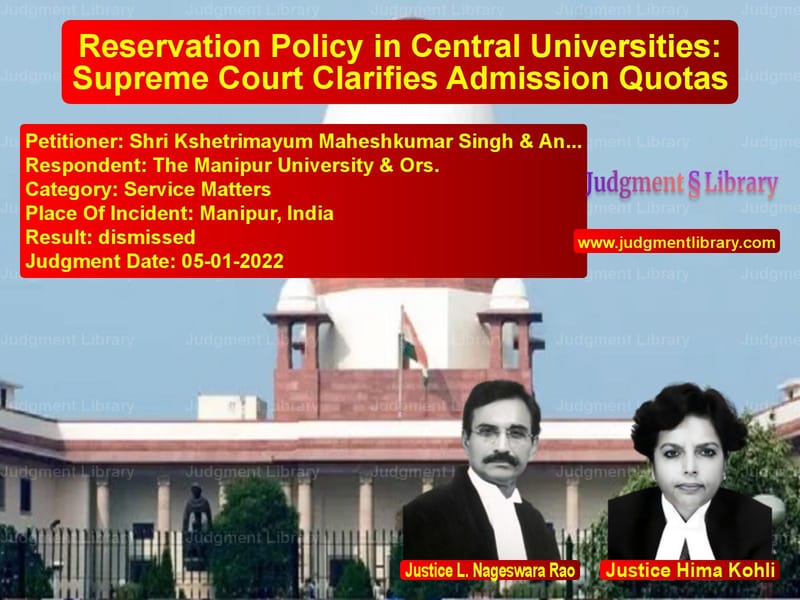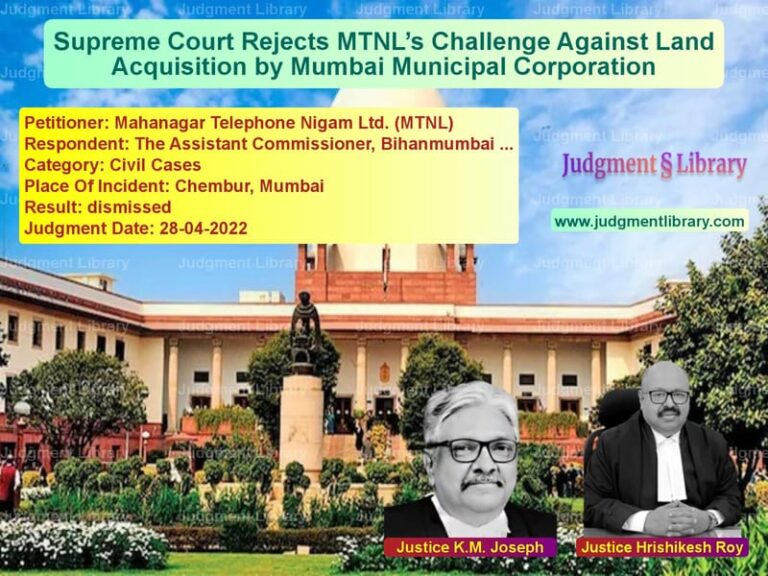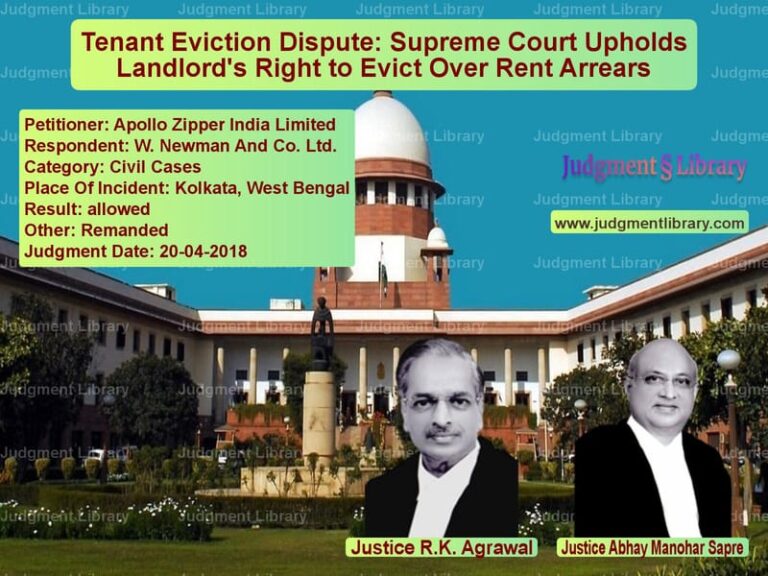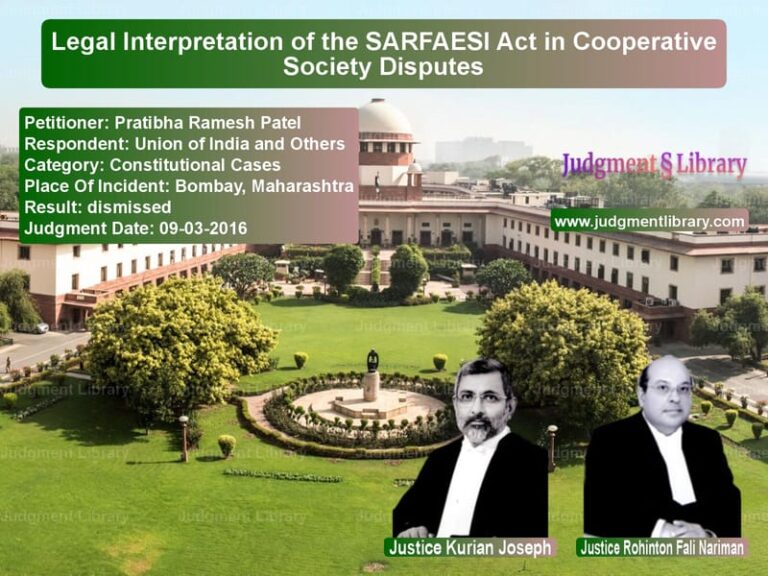Reservation Policy in Central Universities: Supreme Court Clarifies Admission Quotas
The case of Shri Kshetrimayum Maheshkumar Singh & Anr. v. The Manipur University & Ors. involved a legal dispute over reservation policies in admissions to central educational institutions. The Supreme Court had to determine whether Manipur University was required to follow the general reservation norms under the Central Educational Institutions (Reservation in Admission) Act, 2006 (the “Reservation Act”) or apply a special formula introduced in the 2012 Amendment to the Act.
Background of the Case
Manipur University was originally established as a state university under the Manipur University Act, 1980. In 2005, it was converted into a central university under the Manipur University Act, 2005. With this transition, the university became subject to the Reservation Act, which mandated that admissions must follow specific reservation norms: 15% for Scheduled Castes (SC), 7.5% for Scheduled Tribes (ST), and 27% for Other Backward Classes (OBC).
However, in 2012, the Reservation Act was amended through the Central Educational Institutions (Reservation in Admission) Amendment Act, 2012. This amendment introduced a special provision for universities in the northeastern states, allowing them to continue following their pre-existing reservation quotas if they exceeded the general norms.
Arguments of the Petitioners (Shri Kshetrimayum Maheshkumar Singh & Anr.)
- Manipur University was required to follow the general reservation norms of 15% for SCs, 7.5% for STs, and 27% for OBCs as prescribed under the original 2006 Act.
- The 2012 Amendment was only meant to protect tribal-majority universities, primarily those covered under the Sixth Schedule of the Indian Constitution, and should not apply to Manipur University.
- The university’s reduction of SC reservations from 15% to 2% was arbitrary and unconstitutional.
- The amendment was only intended to prevent the dilution of SC/ST quotas but not to justify reducing SC reservations.
Arguments of the Respondents (Manipur University & Union of India)
- Before the 2006 Reservation Act, Manipur University followed the state reservation norms: 2% for SCs and 31% for STs.
- The 2012 Amendment required the university to revert to the reservation percentages that existed before the implementation of the 2006 Act.
- The amendment was intended to accommodate the demographic reality of northeastern states, where the tribal population is significantly higher than the SC population.
- The university correctly implemented the amendment by restoring the previous reservation percentages of 2% for SCs, 31% for STs, and 17% for OBCs.
Key Observations of the Supreme Court
1. Interpretation of the 2012 Amendment
The Supreme Court analyzed the language of the amendment and concluded that it was specifically designed to preserve pre-existing reservation structures in central universities located in northeastern states.
The Court noted:
“The second proviso to Section 3 of the Reservation Act was introduced to protect the interest of ST students in the northeastern region. The provision ensures that reservation percentages for SCs and STs do not get altered due to the general norms under the 2006 Act.”
2. The Meaning of “Specified North Eastern Region”
The petitioners argued that the amendment should only apply to tribal-majority states covered under the Sixth Schedule of the Constitution. However, the Court held that the definition of “Specified North Eastern Region” under Section 2(ia) of the Act clearly included Manipur.
“The 2012 Amendment applies to all northeastern states, including Manipur, irrespective of whether they are covered under the Sixth Schedule or not.”
3. Retaining the Pre-2006 Reservation Structure
The Court examined the intent behind the amendment and found that it was introduced to allow universities in the northeast to maintain their earlier reservation policies.
“Once the amendment came into force, Manipur University was required to follow the reservation norms that existed immediately before the implementation of the 2006 Act. This means 2% for SCs, 31% for STs, and 17% for OBCs.”
4. The 50% Cap on Reservations
The Court addressed concerns about the total percentage of reservations exceeding 50%. It ruled that:
“If the combined SC/ST reservation exceeded 50% before the 2006 Act, then no additional reservation for OBCs would be required under the amendment.”
However, in the case of Manipur University, the university followed a 31% ST and 2% SC reservation before the Act, which did not exceed the 50% cap, allowing 17% OBC reservations.
5. The Role of Ordinances 5.2 and 5.4
Manipur University had framed Ordinances 5.2 and 5.4 to govern admissions and reservations. However, the Court ruled these ordinances invalid as they conflicted with the amendment.
“Any statute, ordinance, or notification that conflicts with the amendment and does not adhere to the 2%-31%-17% reservation formula is invalid.”
Final Judgment
The Supreme Court upheld the Manipur High Court’s ruling and confirmed that Manipur University was required to follow the reservation pattern of 2% for SCs, 31% for STs, and 17% for OBCs.
The key takeaways from the judgment are:
- The 2012 Amendment allows universities in northeastern states to follow pre-existing reservation structures.
- Manipur University correctly implemented the amendment by reverting to the reservation percentages used before the 2006 Act.
- The university’s reservation structure of 2% SC, 31% ST, and 17% OBC is legally valid and in compliance with the amendment.
- Universities in northeastern states must apply the amendment, even if they are not covered under the Sixth Schedule.
The ruling clarifies that the Reservation Act does not impose a uniform quota for all central universities but allows for special provisions in the northeast to accommodate local demographic realities.
Read also: https://judgmentlibrary.com/supreme-court-upholds-dismissal-of-msrtc-driver-in-fatal-accident-case/
Petitioner Name: Shri Kshetrimayum Maheshkumar Singh & Anr..Respondent Name: The Manipur University & Ors..Judgment By: Justice L. Nageswara Rao, Justice Hima Kohli.Place Of Incident: Manipur, India.Judgment Date: 05-01-2022.
Don’t miss out on the full details! Download the complete judgment in PDF format below and gain valuable insights instantly!
Download Judgment: shri-kshetrimayum-ma-vs-the-manipur-universi-supreme-court-of-india-judgment-dated-05-01-2022.pdf
Directly Download Judgment: Directly download this Judgment
See all petitions in Public Sector Employees
See all petitions in Recruitment Policies
See all petitions in Education Related Cases
See all petitions in Judgment by L. Nageswara Rao
See all petitions in Judgment by Hima Kohli
See all petitions in dismissed
See all petitions in supreme court of India judgments January 2022
See all petitions in 2022 judgments
See all posts in Service Matters Category
See all allowed petitions in Service Matters Category
See all Dismissed petitions in Service Matters Category
See all partially allowed petitions in Service Matters Category







